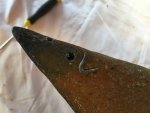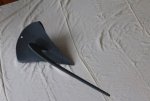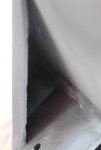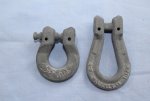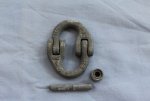Neeves
Well-known member
Plasticine, mostly calcium sulphate, or gypsum, and (gypsum) is used in plaster boards). Plasticine is held together with 'vaseline'.
Sounds like a really imaginative choice (lateral thinking before De Bono invented it).
Presumably the plasticiser burns off leaving an inorganic structure - as one might find in a resin bonded foundry mould.
I like crazy - even those developed by a school boy.
The big question is - what was your mother thinking allowing you to melt lead (water pipe?) - I suspect she never knew.
Jonathan
Sounds like a really imaginative choice (lateral thinking before De Bono invented it).
Presumably the plasticiser burns off leaving an inorganic structure - as one might find in a resin bonded foundry mould.
I like crazy - even those developed by a school boy.
The big question is - what was your mother thinking allowing you to melt lead (water pipe?) - I suspect she never knew.
Jonathan




